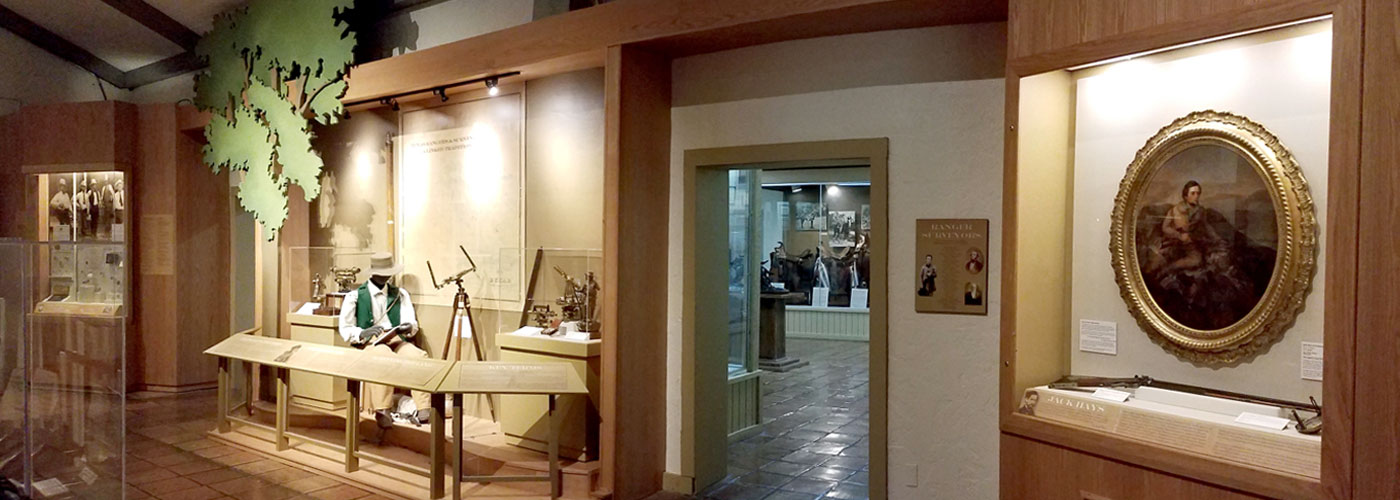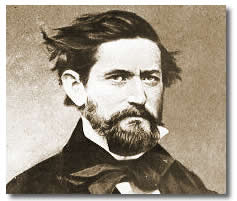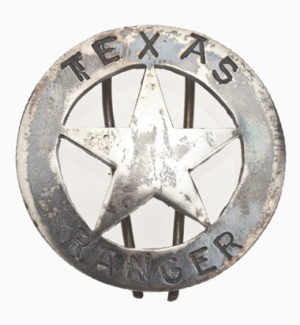Homer Garrison Gallery
Introduction to the Texas Rangers

Stephen F. Austin's Colony
"Since the commencement of this Colony no labor or expence has been spared on my part towards its organization benefit and security – And I shall always be ready and willing to risk my life for the common advantage of those who have embarked with me in this enterprise. I have determined to augment at my own private expence the company of men which was raised by the late Govr. Trespalacios for the defence of the Colony against hostile Indians. I therefore give public notice that I will employ ten men to act as rangers for the common defence. The said ten men will form a part of Lieut. Moses Morrisons Company and the whole will be subject to my orders. Those who wish to be employed will apply to me without delay."
-- Stephen F. Austin, March 1823
Rangers & Surveyors: A Linked Tradition
During the colonial, Republic, and statehood days of Texas, it was not unusual for a man to combine the duties of Texas Ranger and Surveyor. Early surveyors had to be able to defend themselves against any threat while measuring the land, so many surveyors also made great Rangers. Beginning with Stephen F. Austin, surveyors were required to use the Mexican vara as the standard unit of length and mark every corner of a survey. While a typical survey party consisted of a surveyor, two chain carriers, trailblazers, a cook, and a guide, many parties were accompanied by armed guards. After Texas was annexed into the United States in 1845, it retained control over its public lands.
John Coffee “Jack” Hays
John Coffee “Jack” Hays was born in Wilson County, Tennessee in 1817. As a young surveyor, Hays moved to Texas in the 1830s. He became acquainted with Lipan Apache Chief Flacco, who instructed Hays on Apache and Comanche battle strategy, gaining experience as a Comanche fighter, soldier and surveyor. During his Ranger service, Hays participated in the Battles of Plum Creek and Walker’s Creek, among numerous other fights and skirmishes. Along with the introduction of the Colt revolver, his knowledge of Comanche war tactics helped Rangers and surveyors defend against attack.

Behind the Symbol: Texas Ranger Badges and Commissions

The Texas Rangers were organized into two groups following Reconstruction. The Frontier Battalion (1874-1901) operated state-wide, and the Special Forces (1874-1881) were stationed between the Rio Grande and Nueces Rivers. Under the command of the Texas Adjutant General, Rangers were charged with protecting Texas from Indian and bandit raids. Beginning in the 1880s, each Ranger carried a Warrant of Authority and a Descriptive List. These documents provided proof of the Ranger’s authority and a physical description. Ranger badges first appeared during the Frontier Battalion Era, when their focus shifted from frontier defense to law enforcement.
